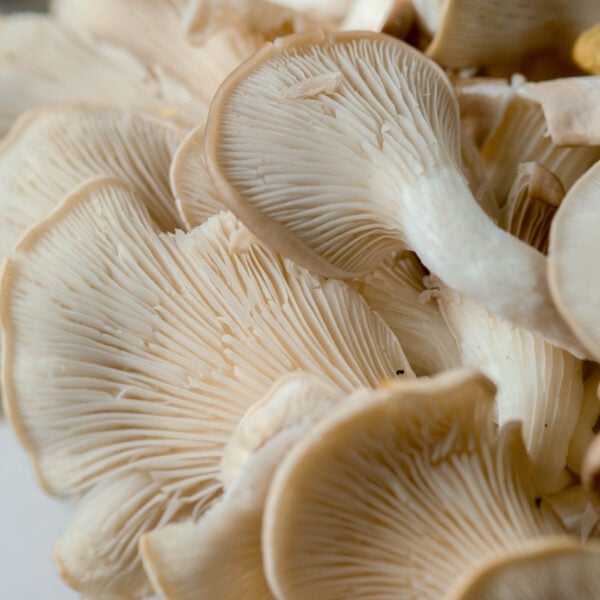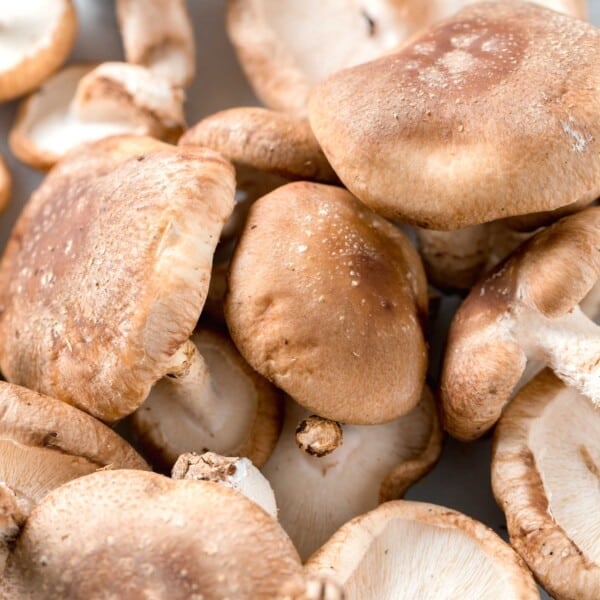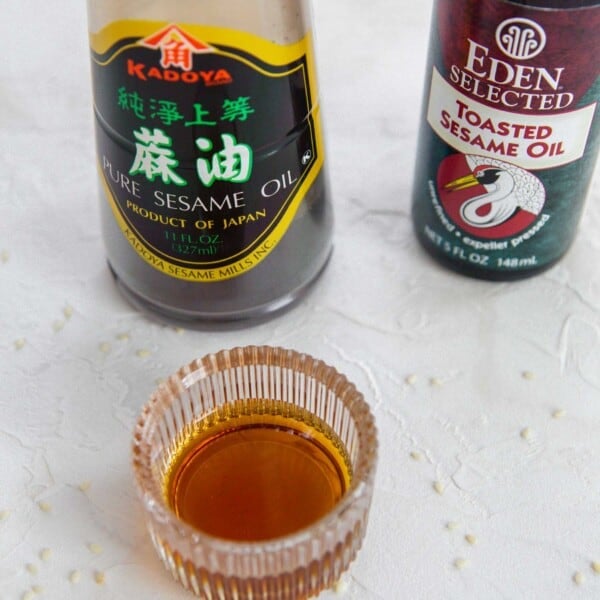This post may contain affiliate links. Please read our disclosure policy.
Lion’s mane mushroom is a fascinating and versatile fungi that is spiking in popularity in recent years. With its distinctive shaggy appearance resembling a majestic lion’s mane, this remarkable mushroom has incredible health benefits along with its culinary versatility. Join me in my journey experimenting with lion’s mane mushrooms in cooking and unlocking its secrets!
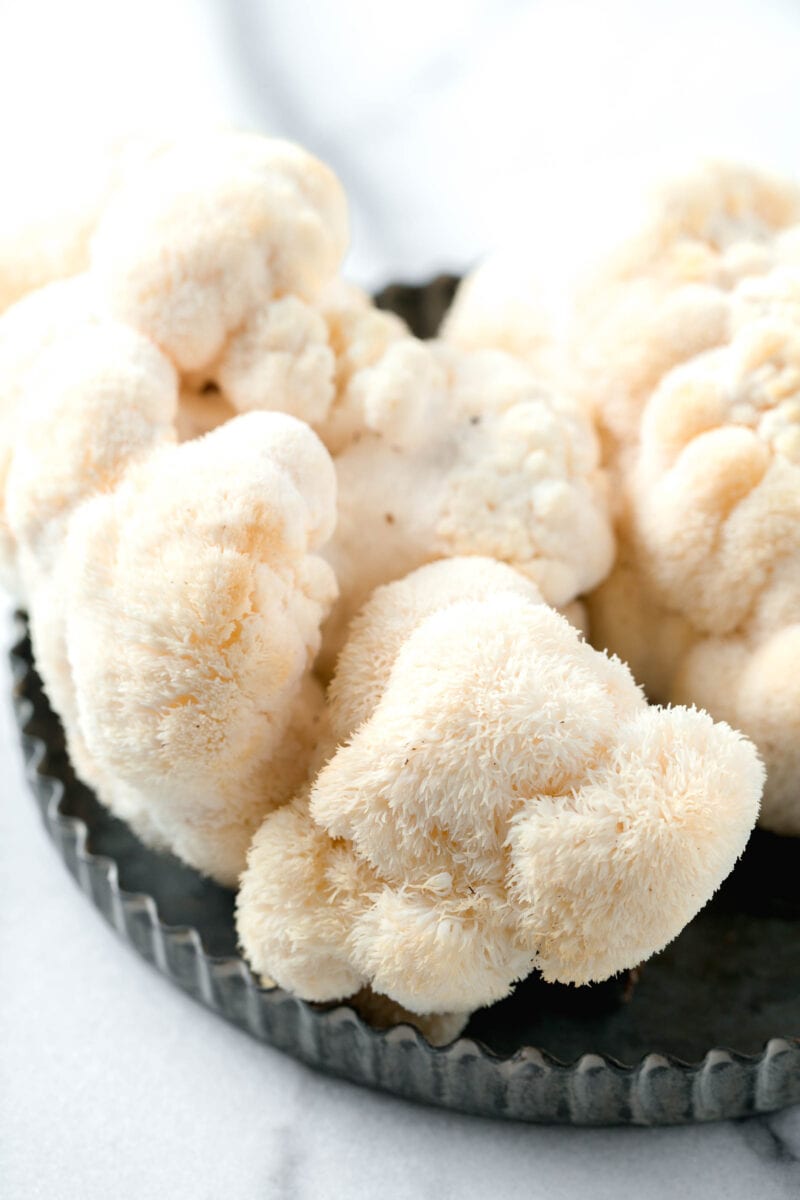
First and foremost, I am not a medical professional nor am I providing medical advice in this article. Speak with your trusted medical professional before taking any supplements.
In recent months, I have been hearing so much about lion’s mane mushrooms, more specifically about the potential to repair nerve damage (source). I have never encountered lion’s mane before nor ever seen it in its mushroom form until going to a farmer’s market and seeing it at a mushroom vendor. I have always seen it as a key ingredient in supplements or powders, and whether or not it’s the new health trend, I do think mushrooms and the research into mushrooms will be really beneficial soon. These fungi actually are pretty powerful and I think for those that want to take a more natural approach, mushrooms will be it.
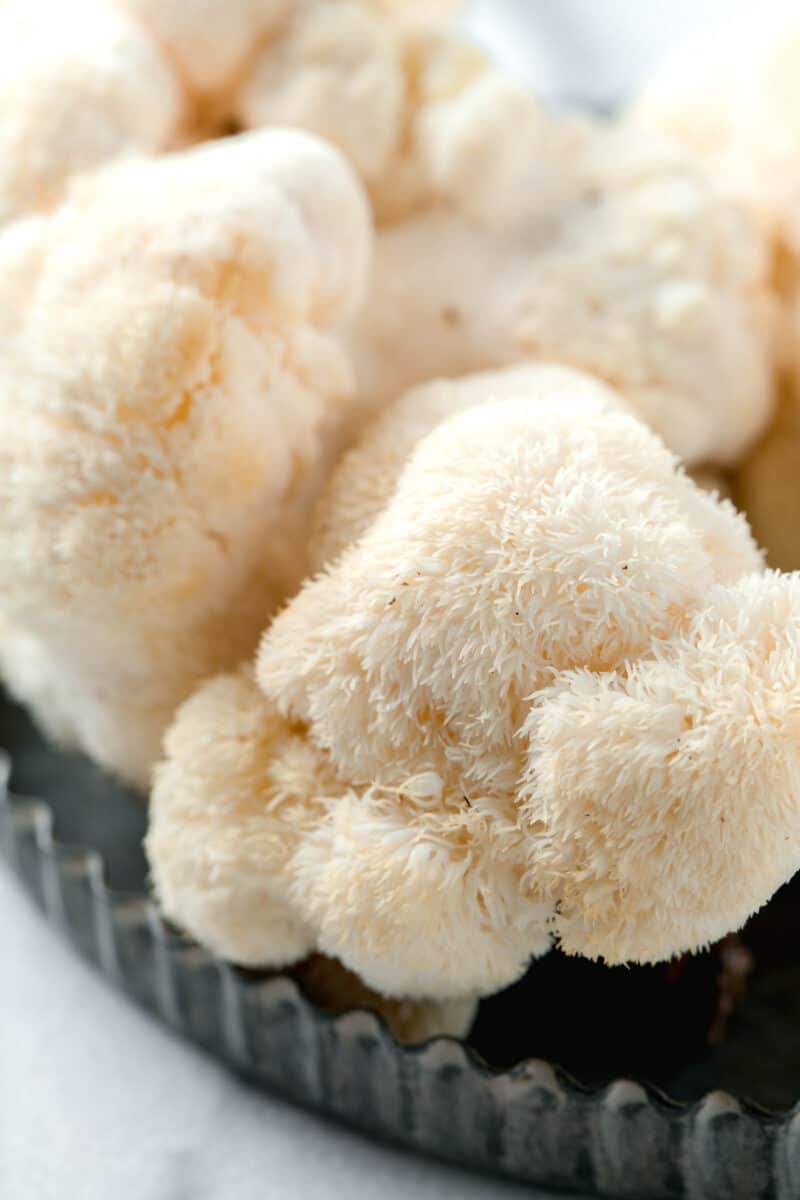
What is lion’s mane mushroom?
Lion’s mane mushroom (scientific name: Hericium erinaceus) is a type of edible mushroom that is native to Asia, Europe, and North America. It has a distinctive appearance, with a shaggy, white, and globular fruiting body that resembles a lion’s mane, hence its name. To the touch, lion’s mane mushrooms are really soft and almost velvety. These delicate yet powerful fungi have been used in traditional Chinese medicine for centuries to promote health and vitality.
Health benefits of lion’s mane mushrooms
Research has shown that lion’s mane mushrooms and their extract (like in powder-form or in over-the-counter supplements) have been shown to have several health benefits. While more studies are needed to fully understand the health practicality of this fungi, the health benefits that have been researched thus far conclude that lion’s mane mushrooms contain antioxidant properties, can improve brain function, boost the immune system, lower cholesterol levels, and fight cancer. As of this writing, lion’s mane is gaining popularity due to its ability to repair nerve damage by stimulating growth and repair of nerve cells.
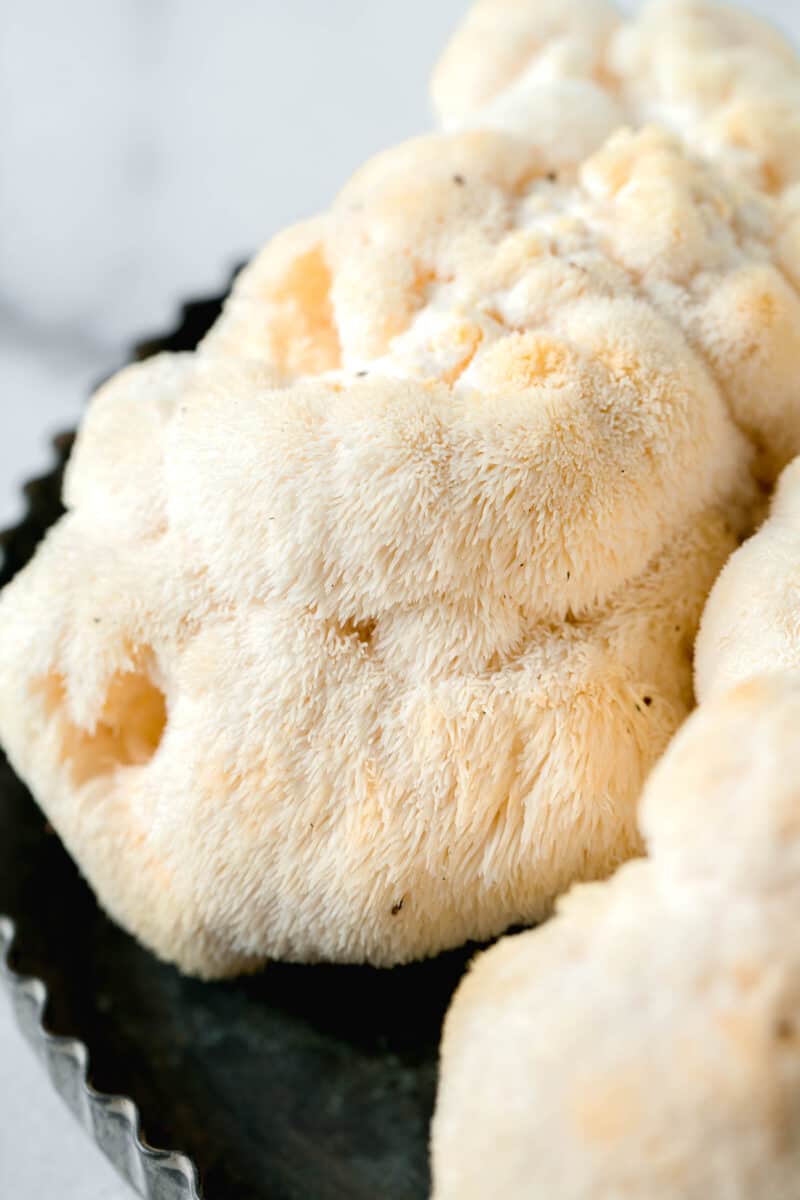
Cooking with lion’s mane mushrooms
Lion’s Mane mushrooms can be cooked in various ways, including sautéing, roasting, grilling, frying, or boiling. Their firm, meaty texture that makes them suitable for use in stir-fries, soups, and stews. They even are a great replacement for meat like in crab cakes or chicken in a creamy pasta dish because of their meaty texture.
Because they’re mushrooms, they take on flavors of a dish really well. For example, a simple butter and garlic sauté will infuse the mushroom with those flavors and be just as delicious as if you were putting it in a complex pasta dish.
Can lion’s mane mushroom be eaten raw? Yes, you can eat lion’s mane mushrooms raw but some folks who have consumed it raw have reported difficulty digesting them so if you have digestion issues, it is best to either cook them or consume a smaller amount first to see how your gut handles it.
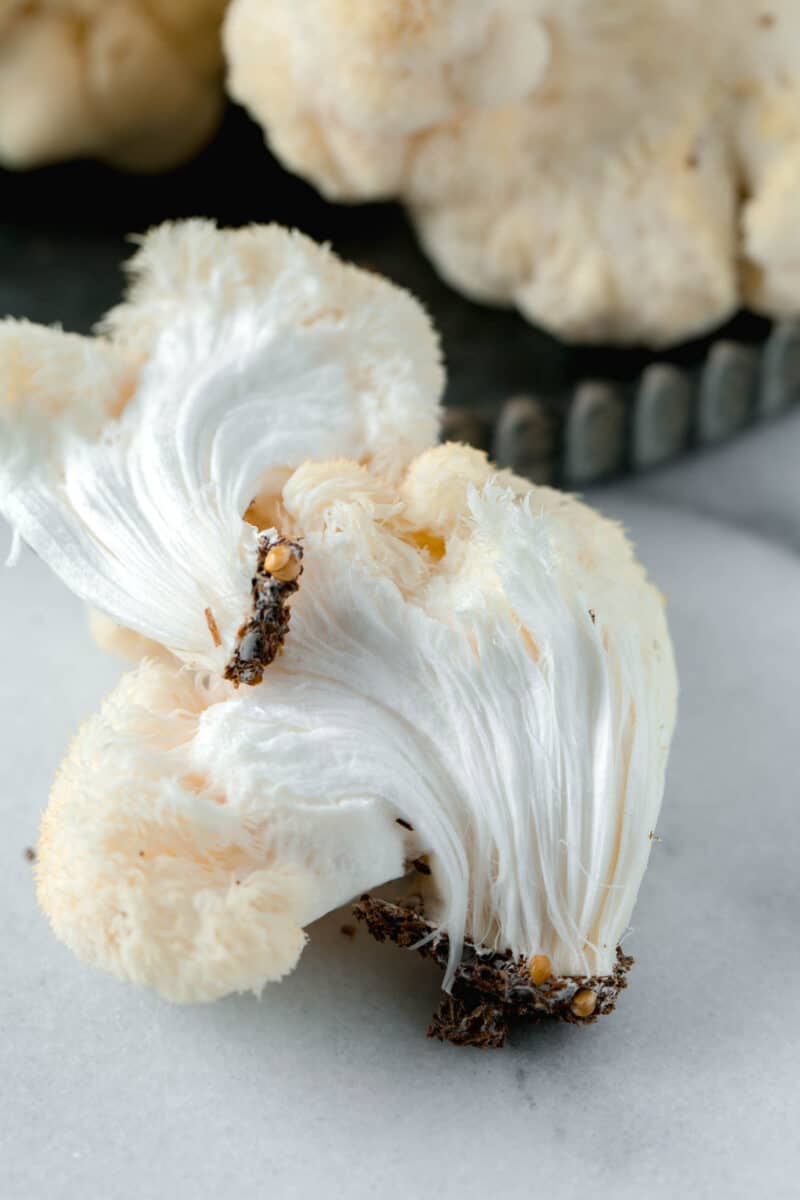
What lion’s mane mushrooms taste like
They have a mildly sweet taste and to some, it tastes like seafood. While I didn’t think it tasted like seafood, I thought their meaty texture could resemble seafood, such as crab meat or lobster meat.
How to find lion’s mane mushrooms
If your local farmer’s market has mushroom vendors, buy from them! Support local and small businesses. I acquired mine from Sweet Pea Farm, but the mushroom vendors are growing and I’m positive you’ll be able to find some at your local farmers market.
If you can’t source any, you can try organic and specialty grocery stores or order online. Definitely do your due diligence when ordering online though!
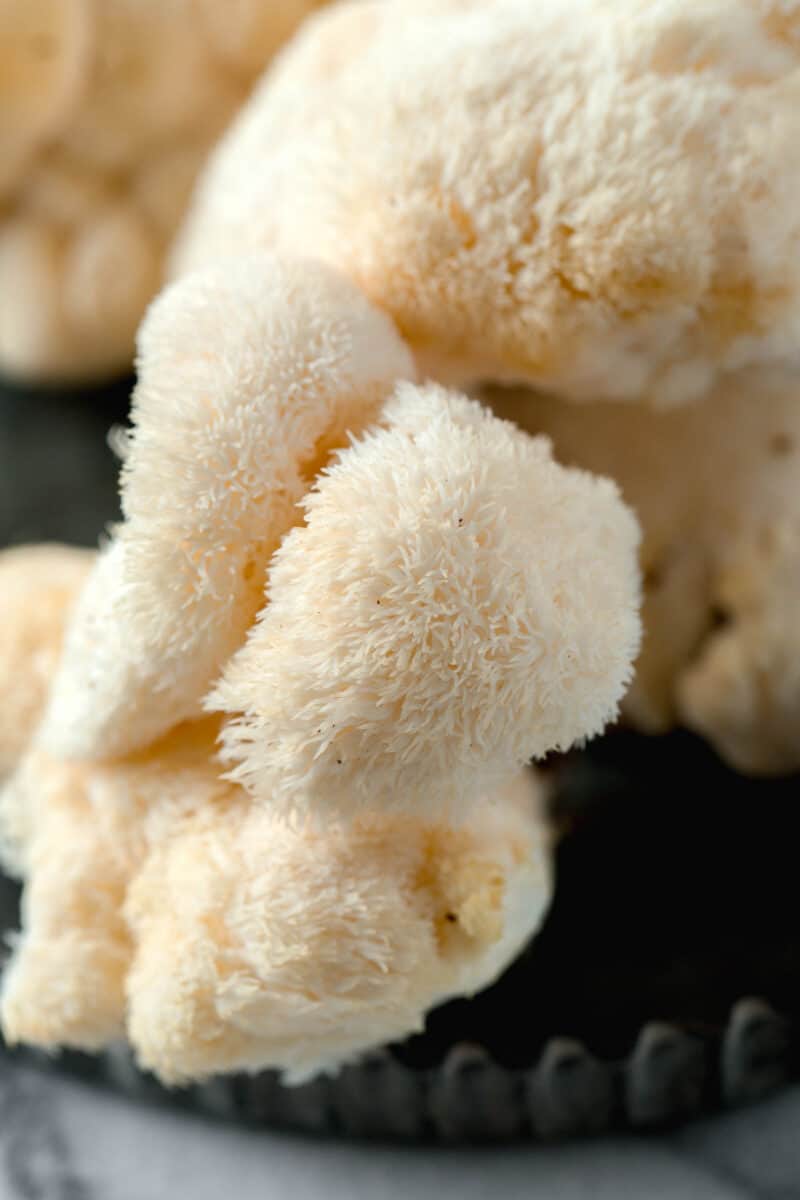
How to clean, prepare, and store lion’s mane mushrooms
To clean. You don’t need to run these mushrooms under water as it’ll just make them mushy. Take a damp paper towel and gently wipe them or tap them gently against the countertop and the excess dirt should shake right off. Mine hardly had any dirt on them.
To prep. When prepare them to cook, just chop off the ends of them (where the majority of the dirt is at the ball of it) and that’s it! You can either then just gently split them in half and keep splitting them or you can chop them up. When you split them, it’s resembles more of shredded meat or jackfruit than if you chopped them up. Either is fine though!
To store. All you have to do is place them in a brown paper bag in a cool, dry place (your refrigerator) and they can last up to two weeks. Do not put them in a plastic bag or closed container. They need to breathe!
Recipe inspiration
Are you ready to try lion’s mane mushroom in your culinary adventures? Here are some recipes that will open your world (and tastebuds) to this fascinating fungi!


